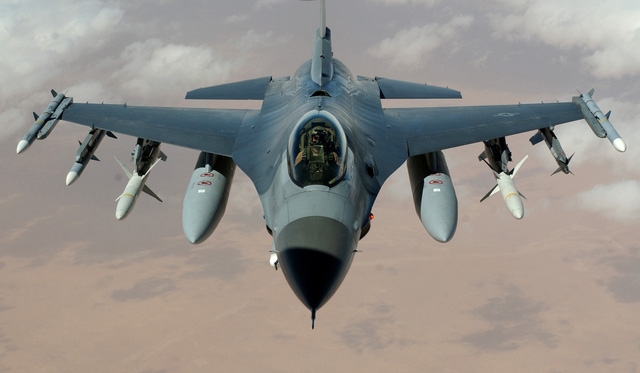In a remarkable demonstration of cutting-edge technology, the self-piloting system of an F-16 fighter jet recently saved the life of a young pilot during a harrowing in-flight emergency. This incredible feat not only underscores the advancements in military aviation but also highlights the crucial role of autonomous systems in enhancing pilot safety during high-stakes missions.

A Routine Flight Turned Perilous
The incident occurred during what was initially a routine training flight. The young pilot, who had recently graduated from one of the Air Force’s most rigorous flight programs, was executing a series of advanced maneuvers designed to simulate combat conditions. Despite his extensive training, the unpredictable nature of flying at high speeds in a highly responsive aircraft like the F-16 can present challenges even for seasoned pilots.
Midway through the exercise, the pilot experienced a sudden and severe physiological issue—likely G-LOC (G-force induced Loss Of Consciousness)—a condition where the body’s blood flow to the brain is insufficient due to extreme gravitational forces. As his vision faded and his body became unresponsive, the aircraft, still traveling at supersonic speeds, began a dangerous descent.
The Self-Piloting System: A Guardian in the Sky
In that critical moment, the F-16’s self-piloting system, also known as the Automatic Ground Collision Avoidance System (Auto-GCAS), activated. Developed by a team of engineers and aviation experts, Auto-GCAS is designed to take control of the aircraft when it detects that a collision with the ground is imminent, particularly in scenarios where the pilot is incapacitated.
The system instantly detected the sharp, unintended descent and calculated that a crash was inevitable unless immediate corrective action was taken. Within milliseconds, Auto-GCAS assumed control, leveling the aircraft’s flight path and pulling it out of its steep dive. The F-16, which had been hurtling toward the ground, stabilized at a safe altitude, giving the pilot precious moments to recover consciousness.

A Life-Saving Rescue
As the pilot regained awareness, he found himself back in control of the aircraft, flying level at a safe altitude. The Auto-GCAS had not only averted a catastrophic crash but also preserved the life of a pilot who had just seconds earlier been on the brink of disaster.
Once safely on the ground, the pilot expressed his immense gratitude for the technology that had saved his life. “It all happened so fast,” he recounted. “One moment, I was pushing the aircraft to its limits, and the next, everything went dark. When I came to, the jet was stable. It was surreal, but I knew it was the system that saved me.”
The Future of Aviation Safety
This incident is a powerful testament to the effectiveness of self-piloting technologies in modern fighter jets. The Auto-GCAS system, while already credited with saving several lives since its deployment, continues to prove its value in real-world scenarios. The system’s ability to react faster than any human, especially in situations where the pilot is incapacitated, represents a significant leap forward in aviation safety.
For the military, this technology is not just about saving costly equipment; it’s about preserving the lives of the brave men and women who serve. As autonomous systems become more integrated into aircraft, the hope is that incidents like this will become increasingly rare, with technology acting as a fail-safe guardian in the sky.

Conclusion: A Heroic Partnership Between Man and Machine
The recent incident involving the F-16’s self-piloting system and the young pilot is more than just a story of technology in action; it’s a narrative of how human skill and advanced machinery can work together to overcome even the most perilous of situations. In an era where the boundaries of aviation are constantly being pushed, the integration of autonomous systems like Auto-GCAS provides a crucial safety net for pilots who are often required to operate in the most extreme conditions.
As the pilot reflects on his experience, he knows that while his training prepared him for countless scenarios, it was the technology embedded within his aircraft that ultimately made the difference between life and death. This partnership between man and machine is a glimpse into the future of aviation, where the balance of human expertise and technological innovation can achieve extraordinary results, ensuring that the skies remain a safer place for those who navigate them.





